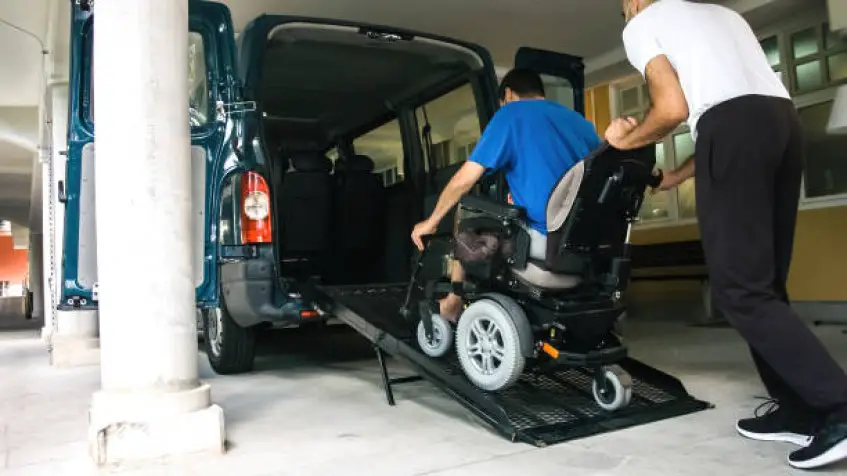Washing our bodies is an unavoidable routine in our daily lives.
But what happens when we have a disabled person around us who cannot bathe themselves?
Their disability shouldn’t deny them from observing this important aspect of their daily routine.
As a friend, family member, or caregiver, you might be left with the task of ensuring they have their bath. If you have little or no knowledge of how to go about it, the simple steps listed below will guide you through.
These steps are grouped into three stages: the preparation stage, the bathing stage, and the after-bath stage.
Table of Contents
- How to Shower Someone with a Disability
- Skills to Help You Get Better
- How to Bathe a Disabled Person (Video)
How to Shower Someone with a Disability
1) The Preparation Stage
Before we take our bath, we tend to make quick mental notes on everything we need to clean up. However, the same process applies when you’re about to bathe a disabled person, except you have to plan more intentionally. It’s important to know that the person you will be bathing might have fragile health, and any mistake or carelessness from you might cause the person pain.
The preparation stage includes the following steps:
i) Prepare the Bathing Water
The bathing water should be lukewarm, except if instructed otherwise by a doctor. To be sure, you can ask the person before preparing the water. An easy way of determining the water temperature is by letting it run on your wrist. If it doesn’t hurt, then you’re good to proceed.
Recommended: How to Get a Disabled Person into a Boat
ii) Keep the Cleaning Items on Standby
The soap, shampoo, sponge, towel, cream, and any other cleaning item should be placed within easy reach in the bathroom. Having these items on standby reduces the chance of leaving the person naked for a long time. It might be embarrassing and can make the person prone to catching a cold.
iii) Set the Bath board or Bath Stool
There are various kinds of aids designed to enable disabled persons to have a good shower time. The common ones are bath boards and bath stools. If the disabled person needs any of this equipment, get it in place.
Also, place a bath mat at the foot of the bathtub with an anti-skid material underneath to make it more stable.
iv) Transfer the Person
When transferring the person from the wheelchair to the bath board or bath stool, you must be cautious. If there’s a support rail and the person can use it, you might just have to stand by and let them sit on the bath board by themselves. A common cause of accidents when bathing a disabled person is during the transfer from the wheelchair to the bath board. If you must lift the person, be sure you can do it alone. If not, seek assistance from someone else.
v) Remove the Person’s Clothes and Jewelry
It’s polite to first ask the person if you should assist in removing their clothes. Ensure you also remove their neck chain, wrist chain, rings, and other jewelry that may cause you injury while bathing them. If you can, remove the rings or wrist chains you have on you as they may be injurious to the person’s skin.
Recommended: How to Get a Disabled Person Upstairs Safely
2) The Bathing Stage

Once all preparations are in place, you can start bathing the person. Sometimes, the person may prefer you only scrub the part of the body their hand can’t reach. But if you will be doing the whole bathing, you should follow the steps below.
i) Begin with the Hair
Firstly, wash the person’s hair thoroughly using shampoo. Although, frequent washing of the hair isn’t advisable as it might cause dry and itchy scalp. If you won’t be washing the person’s hair, cover it with a shower cap and proceed to clean their face with a soft cleaning cloth.
ii) Sponge the Body
Wash parts of the body like the arm, back, chest, belly, and legs thoroughly. As you wash, communicate with the person in the positions to stay that will allow you to bathe them properly.
iii) Proceed to Wash the Armpits and Genital Area
Sponge the armpit region properly. And as you go down the genital area, scrub gently. Too much pressure can irritate the skin around the genital area.
iv) Rinse Properly
Use a hand-held showerhead if there’s one to rinse the person’s body thoroughly. Otherwise, scoop water from a bucket and pour it on every part of the body. An overhead shower may not do the job properly.
After rinsing, dab the person’s body with a clean towel. Avoid scrubbing the person’s body with a towel as it may irritate their skin.
3) After-Bath Stage
This is the final stage. It involves three steps.

i) Apply Body Lotion
Apply the right body lotion on the person’s skin. Start with the face if the person has a different cream for it. Then apply the body lotion to other body parts. You should apply the hair cream or ointment last.
ii) Transfer the Person to the Wheelchair
Wear the person a bathrobe and help them back in the wheelchair. You should be careful because, at this point, the bathroom floor will be wet and slippery.
iii) Dress-Up the Person
Like undressing the person, you can allow them to put on their clothes themselves. Then, wear the person a nice perfume and some jewelry to match.
Recommended: List of Where to Sell Wheelchairs
Skills to Help You Get Better
If you wish to get better at bathing a disabled person, you need to develop some interpersonal skills.
i) Be Patient
Some disabled persons, probably due to their disabilities, might be slow at doing things. From pulling off their clothes to adjusting body postures when bathing, the whole process can be slow. However, you have to be patient with them and encourage them to be swifter. Over time, you will also learn to multitask and manage time properly.
ii) Be Assuring
It’s normal for a disabled person to be slightly embarrassed if it will be your first time bathing them or of the opposite sex. The person may also be skeptical of your ability to handle them well. It’s in your position to assure the person that they are safe under your care.
iii) Communicate Effectively
Learn to communicate effectively with the person you are bathing. Ask questions when in doubt, and ask for permissions when necessary. This skill ensures you don’t put the person at a health risk or make them feel disrespected.
Check Out Related Topics
- How to Prevent Disability Discrimination
- How to Comfortably Use Crutches at School
- How to Install a Wheelchair Lift in a Van Like a Pro
- How to Build a Wheelchair Lift like a Pro
- Here’s How Much Money You Get for Mental Disability
- Top 10 Places Where to Buy Wheelchair Tires
- How to Feed a Disabled Person (Ultimate Guide)
- How to Easily Call a Deaf Person
- How You Can Help a Blind Person to Cross a Busy Road
- How to Pump Up Wheelchair Tyres Effectively




